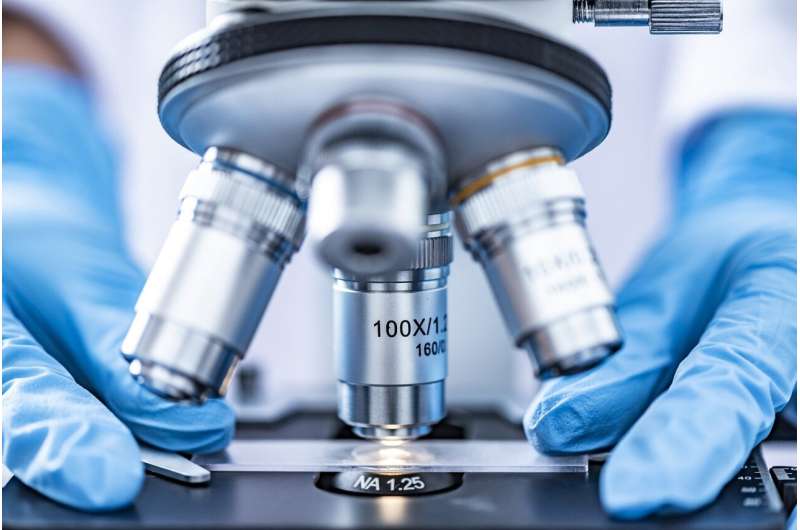Toxic protein linked to muscular dystrophy and arhinia

Researchers at the National Institutes of Health and their colleagues have found that a toxic protein made by the body called DUX4 may be the cause of two very different rare genetic disorders. For patients who have facioscapulohumeral muscular dystrophy (FSHD), or a rare facial malformation called arhinia, this research discovery may eventually lead to therapies that can help people with these rare diseases.
FSHD type 2 (FSHD2) is an inherited form ofmuscular dystrophythat causesprogressive muscle weakness. Arhinia is an extremely rare yet severe disorder that prevents the development of an external nose and the olfactory bulbs and tracts. Both diseases are caused by mutations in the SMCHD1 gene. In patients with FSHD2, there is overproduction of DUX4 which kills the muscle cells, and this leads to the progressive weakening of the muscles.
"It has been known for some time that DUX4 damages the muscle in patients with FSHD2, but what we found is that it can actually also kill the precursors of the human nose," said Natalie Shaw, M.D., lead author of the new study and head of the Pediatric Neuroendocrinology Group at the National Institute of Environmental Health Sciences (NIEHS), which is part of NIH. The work is published inScience Advances.
Shaw's team found that the combination of the mutated SMCHD1 gene and an environmental modifier such as a virus, may trigger the DUX4 toxic protein. This may be what causes arhinia to occur. Usingstem cellscreated from patients with the two diseases, the researchers conducted studies in cranial placode cells, the cells that lead to the development of the body's sensory organs, such as the nose. As the placode cells started to form, they began to produce the DUX4 protein which caused cell death.
The researchers showed that DUX4 is responsible for cell death in placode cells as it is in muscle cells, but they still do not understand why the nose cells do not die in muscular dystrophy or why the muscle cells are not dying in arhinia.
"Now what we have to do is try to figure out the players acting downstream of DUX4, so we can block it from damaging themuscle cellsor the nose precursors and hopefully find some new treatment options for patients suffering from these rare diseases," said Shaw.
NIH will host its Rare Disease Day on Tuesday, Feb. 28, from 9 a.m. to 5 p.m. EST. Theannual eventis a day to raise awareness about rare diseases and their impact on patients' lives. This year'sagendafeatures panel discussions,rare diseasesstories, exhibitors, and scientific posters. The event is free and open to the public.
更多的信息:Kaoru Inoue et al, DUX4 double whammy: the transcription factor that causes a rare muscular dystrophy also kills the precursors of the human nose,Science Advances(2023).DOI: 10.1126/sciadv.abq7744.www.science.org/doi/10.1126/sciadv.abq7744





















